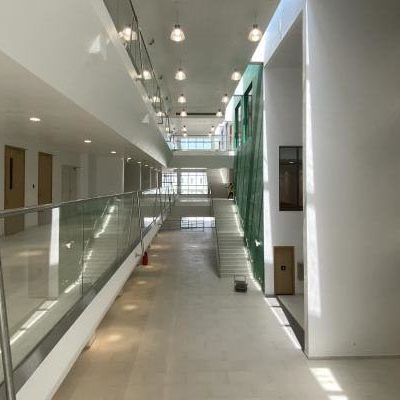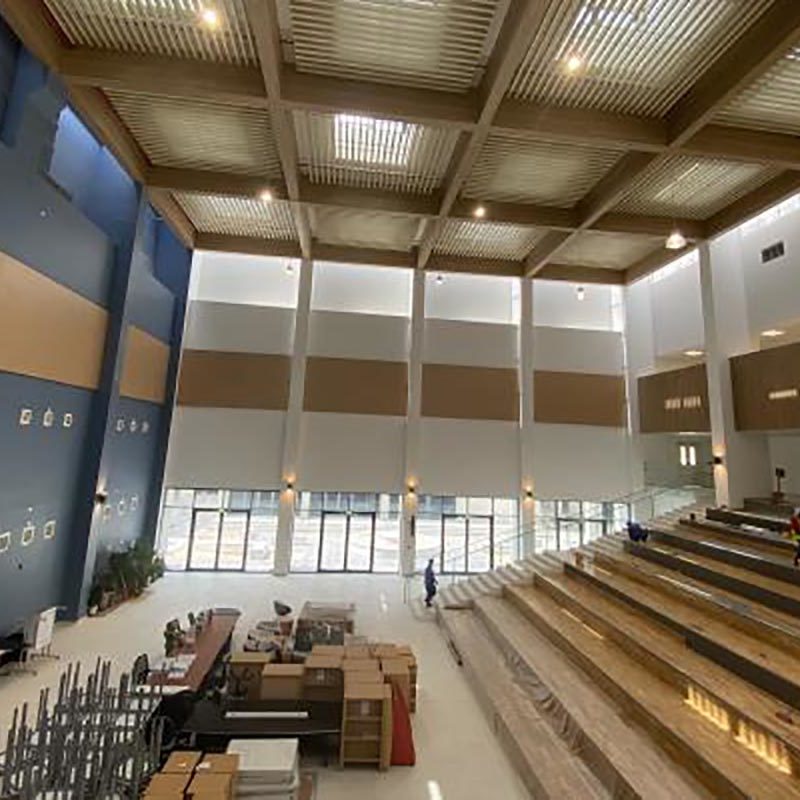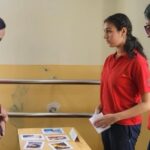ACS International School Doha successfully trialled the on-screen examinations during the COVID-19 (Coronavirus) pandemic to ensure learning did not stop, as Middle Years Programme (MYP) coordinator Holly Fairbrother explains to IB World Magazine.

By Holly Fairbrother
Every teacher has plans. They cannot be truly effective as educators without them. Yet for IB World Schools across the globe, the COVID-19 (Coronavirus) pandemic effectively cancelled all their best laid plans. Coordinators had to rethink their modus operandi in the midst of an unprecedented crisis as campuses closed and exams for the Middle Years Programme (MYP), Diploma Programme (DP) and Career-Related Programme (CP) were cancelled. As tasks go, this was akin to using a common but apt analogy, building the plane while flying it.
The pandemic is certainly the greatest crisis MYP coordinator Holly Fairbrother has faced since she began working at ACS International School Doha, in Qatar, five years ago. The school, which is authorised to offer the Primary Years Programme (PYP), MYP and DP, and is now a CP candidate school, closed its doors to its 900 students in March.
Developing the eAssessment trials
What stood Holly—and the school—in good stead was how she had developed the MYP eAssessment after consulting with teachers, parents and students.
“One of the first things I noticed when I took over was that we were running the MYP eAssessments at the end of grade 10 only with no trial”, she says, ”I started looking at the subject reports from the IB each year with heads of departments and listening to the children. We realized that one huge barrier to success was that the children didn’t know what to do in the exams—not because they couldn’t but because the exams are all skills-based. Instead, the issue is this generation of digital natives are really familiar with being online but not in a formal academic situation, like sitting in a room and taking a formal examination on-screen”.
When the head of DP—with who Holly works closely—said he felt this was putting students at a disadvantage, she began to introduce trial eAssessments for on-screen exams to help grade 10 students understand exam etiquette; adhere to the rules around academic integrity; and become familiar with the pressure of sitting in an exam room.
The trial exams were soon extended to grade nine and, as a teacher of language and literature in grade six, she began introducing digital assessments using Google Forms to mimic, albeit in a scaled back way, the questions students will be asked in grade 10.
Drawing on her master’s degree in integrating technology in education, her knowledge as a registered Google trainer and a significant investment in the AssessPrep learning platform (which runs through ManageBac), Holly has given students a much better insight into the experience of taking on-screen examinations for the MYP.
Predicted grades
This proved particularly useful when the IB was forced to cancel the exams, she explains: “We’ve been able to run the on-screen exams for our grade 10s this year so we’re still giving them an opportunity to show off what they’ve learned”.
The academic integrity of these exams is protected by various technology tools, which prevents the students from accessing anything else online for the duration. In languages, a subject with very specific challenges, the papers are on editable, password-protected PDFs.

Every student must also nominate an adult who, using Adobe Sign, can say they were in the room when the work was done and that it genuinely belongs to the student. At the end of the on-screen AssessPrep exams, the students upload their work, generating a PDF version for teachers to mark and give feedback. For these exams, the school used the MYP May 2019 papers for mathematics, science, English and individuals and societies (I&S). ”It’s not just an exercise because we can give them the feedback they need to develop and improve”, says Holly.
Students with personal projects filed their work at the end of February, shortly before much of the world went into lockdown. For the first time, these projects were moderated digitally, with teachers using a system developed with Google Forms at its heart. “The supervisor can call on all this data—and comments—to moderate the scores”, says Holly. “We used to do this in hard copy but doing it digitally is so much more efficient”.
She adds: ”We have a lot of data. We’re really confident in the predicted grades that we sent to the IB. Children can feel that they’ve genuinely earned their grades rather than something that’s been given to them, which has been a bit of a worry”.
Eliminating barriers to learning
Although the eAssessments have been working well, rather than make them mandatory, the school’s philosophy is to talk to families to ensure that students take the right path for them. Yet staff are convinced that these assessments help students prepare for the real world, feel more confident in exams and, because the communication between teachers, students and families is continuous, stay focused and motivated.
That attitude—much like the trial exams initiative—reflects the school’s determination to be as inclusive as possible, eliminating barriers to learning. In the recent past, staff have accommodated one student who couldn’t identify colours on screen, others who have hearing impairments and students who couldn’t type at normal speed because they had broken fingers and needed accommodation.
“I have a very supportive learning support department who are willing to learn how to run these exams for those who need special accommodations”.
The pandemic has exponentially increased the staff workload at the school—and massively increased the need to communicate with families and students. “We’ve had lots of regular Zoom meetings, which have been really successful. We’ve had 60 or 70 people in a virtual room with us”, says Holly. “We update everyone regularly even if we’re just checking in”.
Such virtual meetings have become, “family meetings”, because a majority of children understand Zoom—much more than their parents do—they are always there, so we started calling them family meetings. As a leadership team, we like this idea of family meetings rather than parent meetings, so that’s another thing to come out of this that we are likely to keep in future”.
A pedagogical leader
Mary Tadros, development and recognition manager for the Middle East says: “The way ACS in Doha has handled online learning, working with parents and gathered data has helped the community cope with closure and Holly has set the school’s path during the pandemic in her role as pedagogical leader”.
If Qatar government guidance doesn’t change, ACS International School Doha plans to welcome students on 1 September. The campus itself, in Al Kheesa just north of Doha, will be brand new and so will some of the ways in which the school educates its students.
Holly says: “We are also developing blended learning plans that utilize all our learning from the pandemic so far”. She is keen to use technology to remove even more barriers to education and ensure continuity of learning. That was her plan in February and—after the crash course in innovation provided by the pandemic—that plan seems of greater importance than ever.

Have a look at our four-part Middle Years Programme (MYP) eAssesment webinar series that explored general research and resources regarding eAsssesment and how it might benefit students. Follow more stories like these on Twitter and feel free to email us your story.
If you enjoyed this story, consider reading more below:



